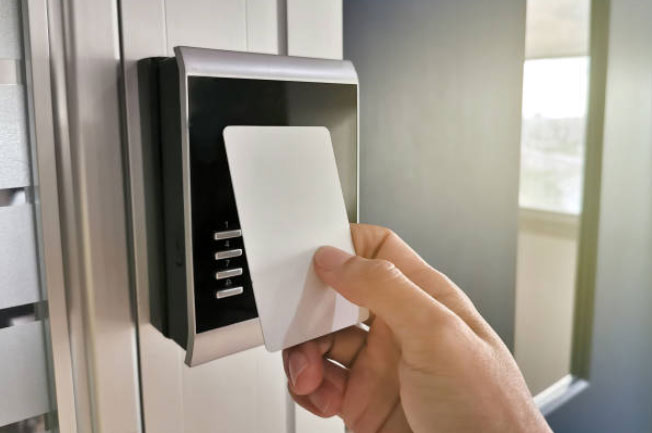HVAC On-demand / Wireless Lighting Control
3 Ways to Improve Green Leases in Australia
Australian commercial tenants are increasingly demanding more action from their landlords on sustainability. This has led to the emergence of the “green lease” as a common practice in the industry. But are green leases really as effective as they should be, or are they mostly fluff?

Businesses should be looking to become more sustainable in many different aspects of their operation (Photo: Forbes)
What is a Green Lease?
Green leases aim to better align financial incentives and sustainability goals between a landlord and a tenant. They incorporate ecologically sustainable development agreements for both parties to achieve energy efficiency throughout the lease.1
Green leases are widely used in Australia, where even the Federal government requires that green leases be used for all buildings leased to a government agency or department.2 94% of premium property owners in Australia are now using green leases.3 If you are a property developer and don’t have a working green lease model, you’re behind the curve.
Problems with Green Leases
Despite the progress that green leases are making, many landlords and tenants are still reporting trouble with follow-through and using dispute resolution elements when either side fails to comply with the green lease.
On the tenant side, even if energy ratings fell below the agreed-upon targets, most agencies reported that they would not take aggressive action to fix this and would still renew their lease in the same building. Landlords are also reluctant to comply – they have no incentive to initiate the dispute resolution process, as maintaining occupancy is their primary focus.4
In short, the fundamental structure of the green lease does not contain a strong incentive system, using messy dispute resolution processes rather than straightforward and scalable financial incentives.
Green leases need to adjust their structure to improve results. This should be done in three ways: giving tenants more control over their energy use, providing scalable incentives that matter to both parties, and optimizing operations across landlord-tenant boundaries to make energy efficiency easier to achieve.
Control
Occupants have all the information about office activity and preferences – in other words, their needs in terms of aircon and lighting. But in many cases the landlord retains control over those systems, especially the aircon. This gap between information and control can lead to significant inefficiencies.
Landlords can begin to close this gap by providing tenants with more control as a part of a trusting exchange (and formal contract). Without control, it becomes impossible for a tenant to reduce their energy usage in the most impactful area.
While giving tenants control can seem scary due to the potential for abuse, occupants understand their needs the best – they know which areas are unoccupied and can be set to a higher temperature. Basing aircon operations on their needs instead of assumptions can eliminate energy waste from overcooling just to minimize complaints.

Employees tapping in with their access card will activate the AC in their zone (Photo: iStock)
En-trak’s Tenant Experience Platform helps to give building managers peace of mind about relinquishing control, with measures in place to prevent abuse and encourage savings. Empty areas of the office stay at 27-28° C until an occupant from that zone taps into the lobby. Meeting rooms are not cooled until 10 minutes before scheduled meetings, eliminating energy waste from cooling unoccupied spaces. Connecting occupants with their air conditioning through a smart platform creates opportunities for energy saving in a way that minimizes risk for landlords while maximizing comfort for tenants.
Scalable Incentives
To further drive energy savings (and prevent abuse), landlords also need to provide tenants with incentives for their green efforts in a scalable way. An all-or-none incentive structure is likely to end in both parties averting their eyes if results are poor, but with scalable incentives tenants can choose where to draw the line between savings and comfort/convenience. For example, providing a discount on the management fee proportional to results can motivate tenants to lower their energy use with a sliding scale. Real incentives lead to real action and real results.

Detailed data will make scalable incentives possible (Photo: iStock)
En-trak’s Tenant Experience platform provides both parties with data to pinpoint how much cooling was provided, simplifying the process for setting up these types of incentives. For example, TEP gives landlords clear and valuable data on average temperature readings for one tenant or floor. This can be used as the basis for providing discounts (e.g. a base management fee for 24°C or lower and a discount of a certain percentage for every degree above that).
Optimize
With tenants properly incentivized and given the control they need, the final step is to focus on the nuts and bolts of optimization. While tenants do have the capability to source for tools that will help them to optimize their cooling demand (and, under a green lease, save money), landlords can provide much better cost efficiencies by deploying the technology on a building level.
En-trak’s Tenant Experience Platform allows for dynamic temperature setpoints that fluctuate throughout the day based on occupancy and preferences. These setpoints are optimized values determined by our machine learning algorithm based on occupant feedback through our mobile app and other relevant data.

Walking back to the office after lunch can cause temperature needs to fluctuate temporarily (Photo: Reuters)
Temperature preferences change throughout the day due to temporary issues – entering the office after a long, hot walk from the train station or eating a spicy lunch. TEP makes it possible for tenants to request and receive a cooler temperature for these nonpermanent circumstances without causing long-term increases in energy use. Added together, these micro-optimizations can make a big difference in total cooling demand and energy use.
Conclusion
Green leases are a step in the right direction, with a focus on the fundamental need for cooperation between landlords and tenants. However, to drive the next level of results, they need to be paired with control, scalable incentives, and optimization tools. Only then can they begin to reach their full potential.
1Tenant’s Guide to Green Leases | Department of Industry, Science, Energy and Resources, 15 Aug 2012
2Green Leases in Australia: An Analysis of Current Trends and Issues | IRBNet
3Green leasing | Better Buildings Partnership, 07 Sep 2017
4An Analysis of the Use and Effectiveness of the Australian Government’s Green Lease Schedules | Department of the Environment and Energy, 01 Aug 2017